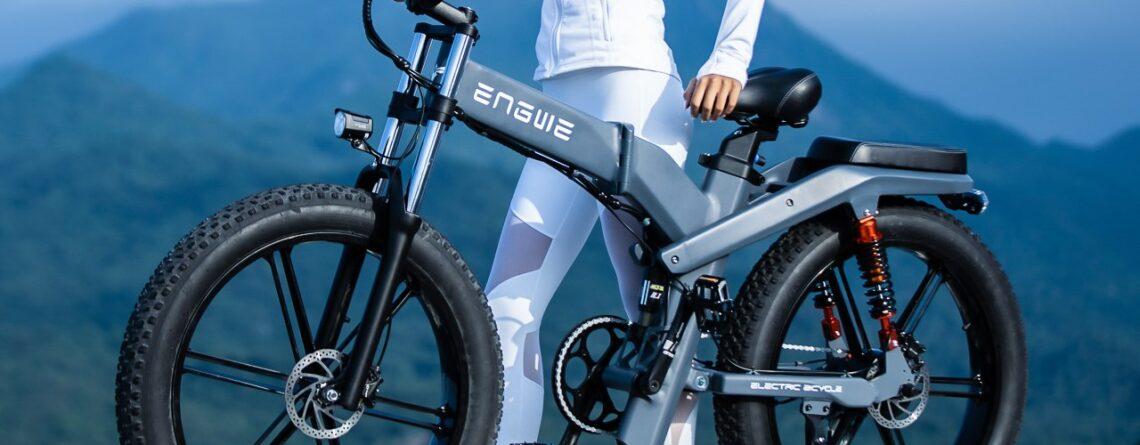What constitutes an E-Bike? Unveiling the Evolution of Urban Transportation
In recent times, the realm of transportation has witnessed a substantial leap forward thanks to the introduction of electric bicycles, commonly referred to as e-bikes. These cutting-edge machines are reshaping our approach to navigating urban landscapes, providing an eco-friendly, cost-efficient, and surprisingly enjoyable alternative to conventional modes of transport. In an era where environmental concerns and urban congestion are at the forefront, e-bikes are emerging as a practical solution. But what precisely defines an e-bike, and how does it differentiate itself from traditional bicycles?
E-Bike Fundamentals An e-bike is a bicycle equipped with an electric motor designed to assist the rider, typically powered by a rechargeable battery. The motor’s purpose is to enhance human power rather than replace it, making cycling more accessible across longer distances or steep inclines.
Key Components of an E-Bike
- Motor: Serving as the heart of the e-bike, the motor can be found in the front or rear wheel hub or integrated into the bike’s center. Hub motors are common in budget-friendly models, while mid-drive motors, situated near the bike’s crank, provide a more balanced and natural riding experience.
- Battery: Usually affixed to the frame, the battery fuels the motor. The bike’s range depends on the battery’s capacity, measured in watt-hours (Wh) – a higher capacity translates to an extended travel range on a single charge.
- Controller: Managing the power flow from the battery to the motor, the controller is typically integrated into the e-bike’s display or handlebars, allowing riders to choose different levels of motor assistance.
Varieties of E-Bikes
- Pedal-Assist: The most prevalent type, where the motor engages only when the rider pedals, offering an intuitive riding experience and preserving battery life.
- Throttle-Based: These e-bikes can propel forward without pedaling, akin to a scooter, though they may be subject to stricter regulations in certain regions.
- Speed Pedelecs: High-performance e-bikes designed for higher speeds, making them suitable for longer commutes.
Advantages of E-Bikes
- Eco-Friendly: E-bikes contribute to reduced carbon emissions, presenting an environmentally conscious commuting option.
- Health Benefits: Despite motor assistance, riders still engage in physical activity, making e-bikes beneficial for fitness.
- Cost-Effective: Compared to cars or public transport, e-bikes prove to be a more economical choice in the long run, particularly considering the low cost of recharging batteries.
- Accessibility: E-bikes broaden cycling appeal, catering to a wider audience, including those deterred by physical limitations or challenging terrains.
Navigating Legalities The legal status of e-bikes varies globally. While many regions classify them similarly to traditional bicycles, specific regulations exist, especially concerning speed limits and mandatory helmet use. E-bike users must familiarize themselves with local laws for safe and legal riding.
Choosing the Right E-Bike Consider the following when selecting an e-bike:
- Purpose: Tailor your choice to commuting, off-road adventures, or city cruising.
- Battery Range: Ensure the battery life aligns with your daily travel needs.
- Motor Type: Choose between hub or mid-drive motors based on performance and budget preferences.
- Comfort and Design: Select a model that aligns with your aesthetic preferences and physical requirements.
The Future of E-Bikes The e-bike market is swiftly evolving with advancements in battery technology, motor efficiency, and overall design. Future developments may include integrated GPS systems, advanced safety features, and enhanced connectivity options.
In Conclusion E-bikes seamlessly merge traditional cycling with modern technology, offering a sustainable, health-conscious, and enjoyable means of navigating urban environments. As cities progress and societal consciousness leans towards eco-friendly living, e-bikes emerge as pivotal players in the future of urban mobility. Whether for commuting, fitness, or leisure, e-bikes present a compelling alternative to traditional transport, promising a greener, healthier, and more efficient future for city dwellers worldwide.
In recent times, the realm of transportation has witnessed a substantial leap forward thanks to the introduction of electric bicycles, commonly referred to as e-bikes. These cutting-edge machines are reshaping our approach to navigating urban landscapes, providing an eco-friendly, cost-efficient, and surprisingly enjoyable alternative to conventional modes of transport. In an era where environmental concerns and urban congestion are at the forefront, e-bikes are emerging as a practical solution. But what precisely defines an e-bike, and how does it differentiate itself from traditional bicycles?
E-Bike Fundamentals An e-bike is a bicycle equipped with an electric motor designed to assist the rider, typically powered by a rechargeable battery. The motor’s purpose is to enhance human power rather than replace it, making cycling more accessible across longer distances or steep inclines.
Key Components of an E-Bike
- Motor: Serving as the heart of the e-bike, the motor can be found in the front or rear wheel hub or integrated into the bike’s center. Hub motors are common in budget-friendly models, while mid-drive motors, situated near the bike’s crank, provide a more balanced and natural riding experience.
- Battery: Usually affixed to the frame, the battery fuels the motor. The bike’s range depends on the battery’s capacity, measured in watt-hours (Wh) – a higher capacity translates to an extended travel range on a single charge.
- Controller: Managing the power flow from the battery to the motor, the controller is typically integrated into the e-bike’s display or handlebars, allowing riders to choose different levels of motor assistance.
Varieties of E-Bikes
- Pedal-Assist: The most prevalent type, where the motor engages only when the rider pedals, offering an intuitive riding experience and preserving battery life.
- Throttle-Based: These e-bikes can propel forward without pedaling, akin to a scooter, though they may be subject to stricter regulations in certain regions.
- Speed Pedelecs: High-performance e-bikes designed for higher speeds, making them suitable for longer commutes.
Advantages of E-Bikes
- Eco-Friendly: E-bikes contribute to reduced carbon emissions, presenting an environmentally conscious commuting option.
- Health Benefits: Despite motor assistance, riders still engage in physical activity, making e-bikes beneficial for fitness.
- Cost-Effective: Compared to cars or public transport, e-bikes prove to be a more economical choice in the long run, particularly considering the low cost of recharging batteries.
- Accessibility: E-bikes broaden cycling appeal, catering to a wider audience, including those deterred by physical limitations or challenging terrains.
Navigating Legalities The legal status of e-bikes varies globally. While many regions classify them similarly to traditional bicycles, specific regulations exist, especially concerning speed limits and mandatory helmet use. E-bike users must familiarize themselves with local laws for safe and legal riding.
Choosing the Right E-Bike Consider the following when selecting an e-bike:
- Purpose: Tailor your choice to commuting, off-road adventures, or city cruising.
- Battery Range: Ensure the battery life aligns with your daily travel needs.
- Motor Type: Choose between hub or mid-drive motors based on performance and budget preferences.
- Comfort and Design: Select a model that aligns with your aesthetic preferences and physical requirements.
The Future of E-Bikes The e-bike market is swiftly evolving with advancements in battery technology, motor efficiency, and overall design. Future developments may include integrated GPS systems, advanced safety features, and enhanced connectivity options.












